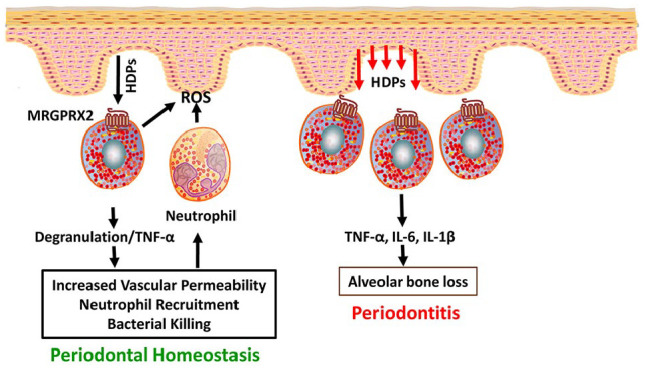Figure 4.

MRGPRX2 contributes to both periodontal tissue homeostasis and periodontitis. During infection, host defense peptides (HDPs) produced from gingival epithelium activate mast cells through MRGPRX2, which undergo degranulation to release preformed mediators and tumor necrosis factor–α (TNF-α). This causes increased vascular permeability and increased migration of neutrophils in the infected tissue. Neutrophils clear microbial infection through effector molecule (reactive oxygen species [ROS]) secretion and maintain tissue homeostasis. In contrast, during chronic infections such as periodontitis, overproduction of HDPs from gingival epithelium leads to recruitment of more mast cells, and its activation by MRGPRX2 releases more proinflammatory cytokines such as interleukin (IL)–6, IL-1β, and TNF-α. This results in periodontal tissue breakdown, a major characteristic feature of periodontitis.
